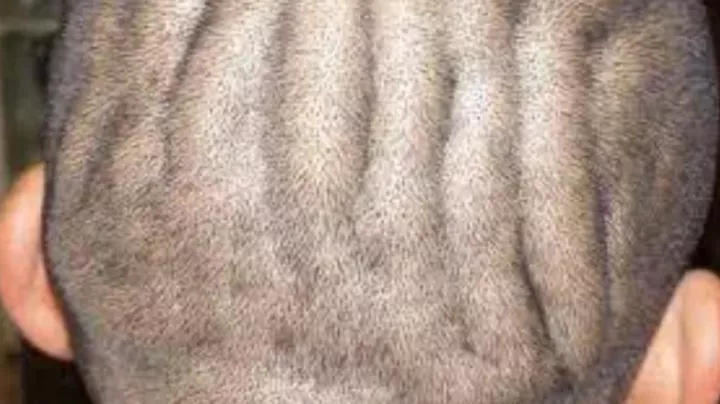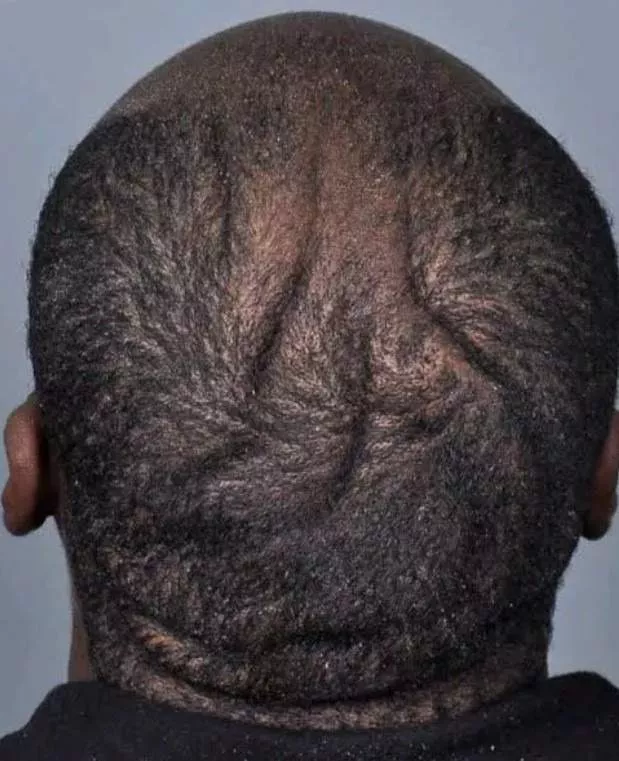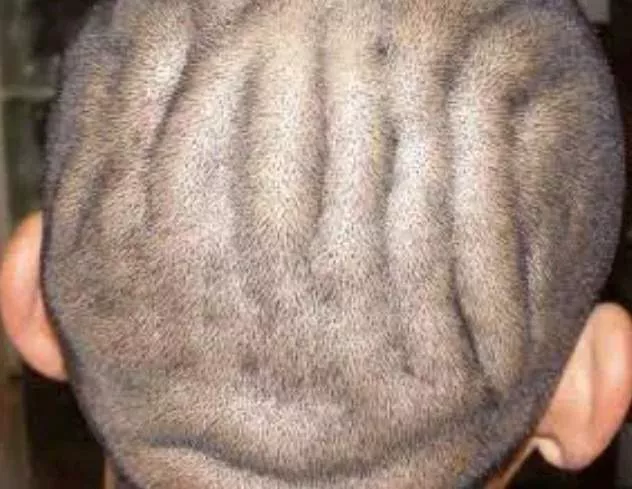
Cutis verticis gyrata (CVG), also called paquidermia verticis gyrata, cutis verticis plicata, and "bulldog" scalp disease, is a very uncommon benign cutaneous illness that is characterised by convoluted folds and deep furrows of the scalp that resemble cerebral sulci and gyri.
This condition typically affects postpubertal men, and a hormonal factor has been hypothesised as to why. Secondary cutis verticis gyrata is thought to have a number of underlying causes, and the pathophysiology in this instance can be linked to the particular underlying ailment.


Who gets gyrating cutis verticilli?
Idiopathic CVG primarily affects men and typically develops before the age of 30. The scalp surface has symmetrical wrinkles that are aligned sagittally. The vertex and occiput are the only areas of the scalp that are typically afflicted, however the entire scalp may be.
In a region of skin that is generally normal, there are no skin appendages at all due to a condition known as necrosis.
Congenital Melanocytic Nevusm
Large, folding lesions on the scalp that resemble cutis verticis gyrata are typically linked with hypertrichosis, but they can also have sparsely covered hair.
What is the primary cause of the illness?
Main factor Although there is no known aetiology for CVG, endocrinological and genetic factors are likely to play a part in the condition's development.
There is a connection between primary non-essential CVG and neurological disorders like epilepsy and schizophrenia.
Some of them are the reasons that are given below:
1.Acromegaly.
2.Melanocytic naevi in moles
3. Birthmarks such fibromas, connective tissue nevi, and naevus lipomatosus.
4. Inflammatory conditions (including impetigo, eczema, psoriasis, folliculitis, acne, and Darier disease).

















Comments